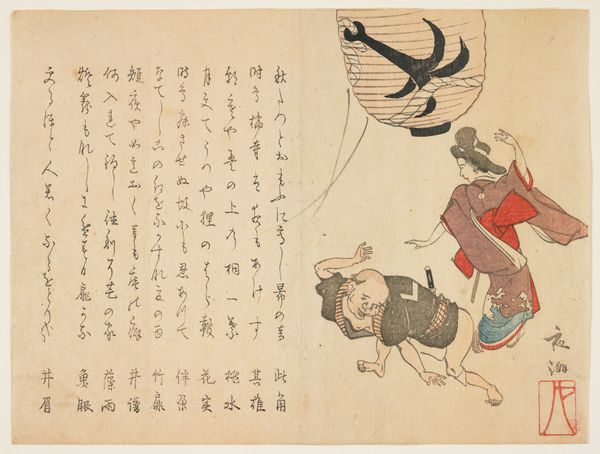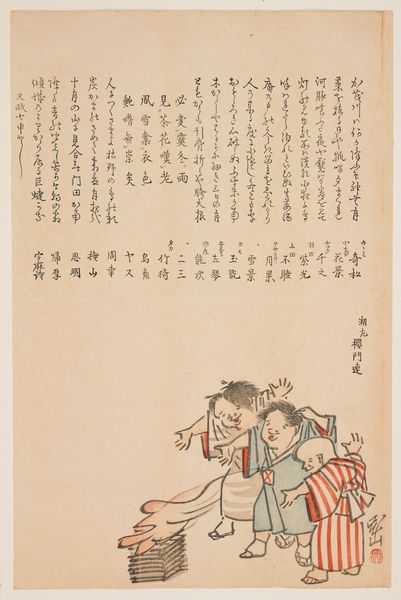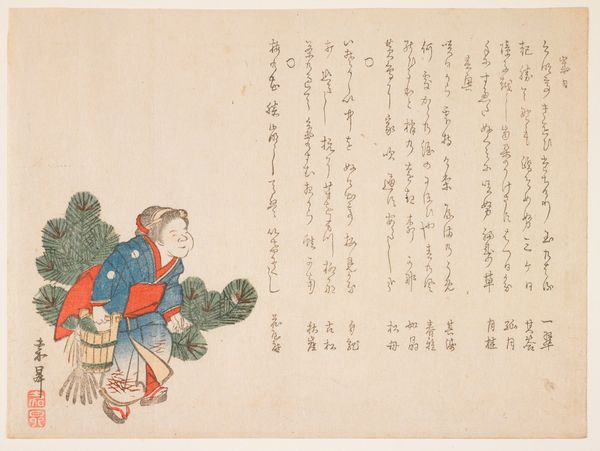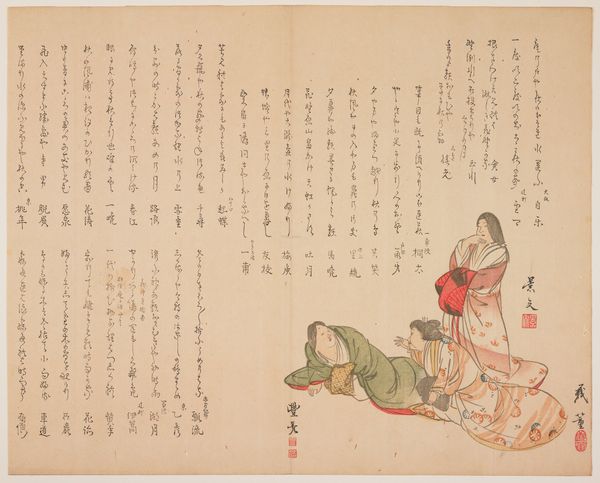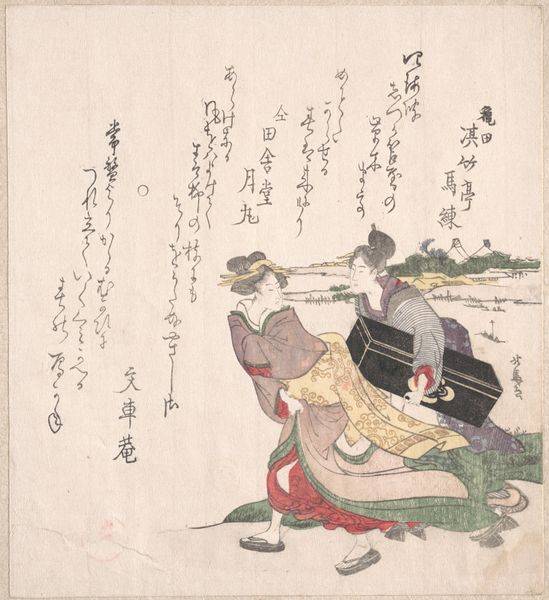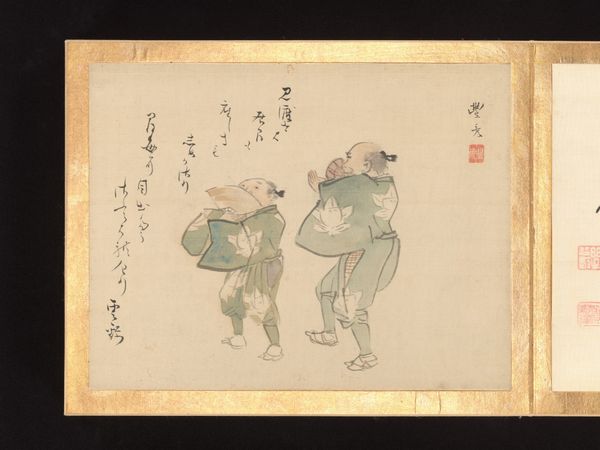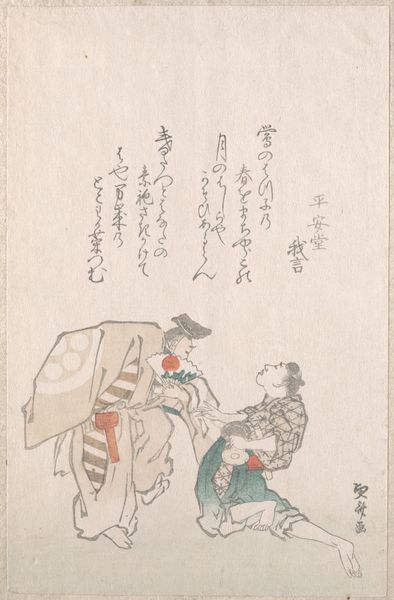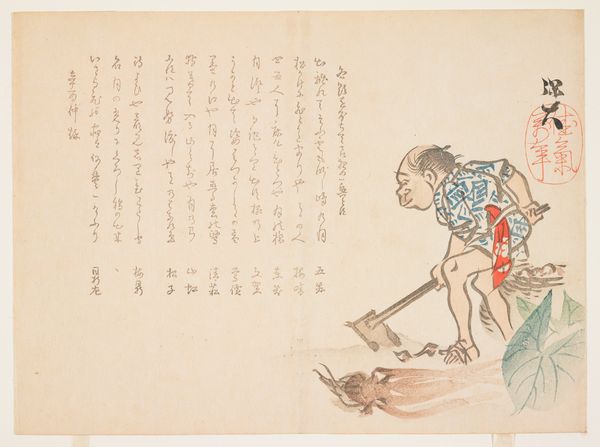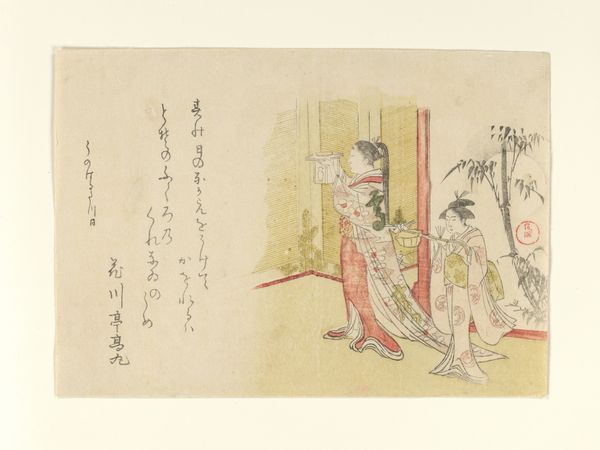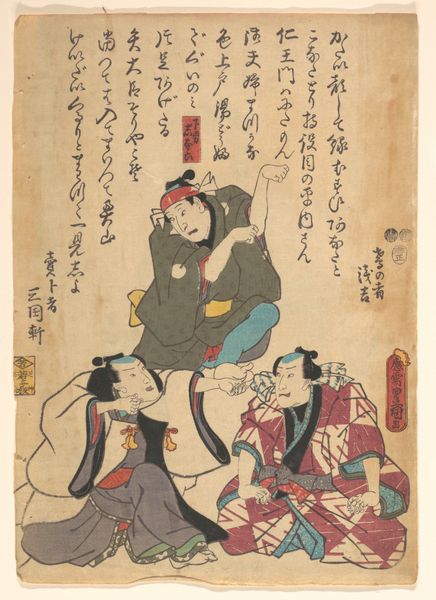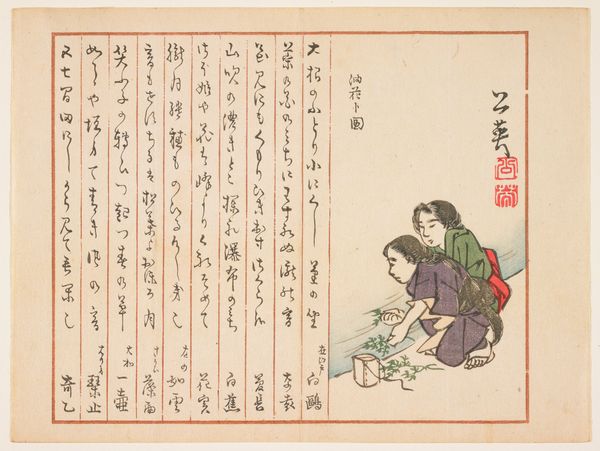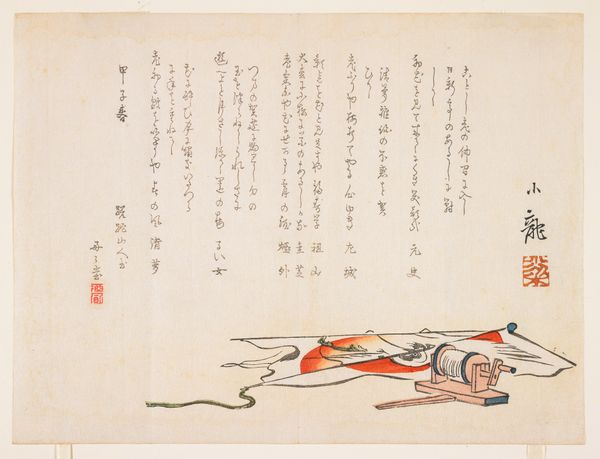
print, ink, woodcut
# print
#
asian-art
#
ukiyo-e
#
japan
#
figuration
#
ink
#
woodcut
#
genre-painting
Dimensions: 7 3/16 x 9 3/4 in. (18.3 x 24.8 cm) (image, sheet)
Copyright: Public Domain
This print, "Playing Battledore," was made by Gyohaku using woodblock printing, a technique that goes back centuries in Japan. It’s not just about the image, but also the labor and expertise embedded in the process. Look closely, and you’ll see how each color requires a separate block, carved meticulously by hand. This wasn't a solitary endeavor; it involved collaboration between the artist, the carver, and the printer. The wood’s grain subtly appears, adding texture and depth that a digital print simply can’t replicate. Consider the social context too. Woodblock prints like these were relatively accessible, a form of popular culture enjoyed by a wide audience. They weren't confined to the elite, but circulated among ordinary people. So, "Playing Battledore" isn't just a pretty picture, it is a testament to the power of craft and the democratization of art. It reminds us that the value of art lies not only in the image, but also in the story of its making and its place in society.
Comments
minneapolisinstituteofart almost 2 years ago
⋮
Like many customs associated with the coming of New Year, playing battledore has its origins in a religious rite. Dating to as early as the eighth century, it was originally played within shrine precincts to wish young girls good health. By the Edo period (1615-1868), it became customary to play the game during the New Year holidays. Although similar to badminton, it is played with a rectangular wooden paddle instead of a racket. One of the players shown here, the man holding a paddle in his right hand, is featured as Ebisu, a mythical figure typically depicted with a large round hat and a broad smile. As one of the Seven Gods of Fortune, Ebisu is associated with business success. Therefore, this print may have been commissioned by a group whose members were merchants.
Join the conversation
Join millions of artists and users on Artera today and experience the ultimate creative platform.
